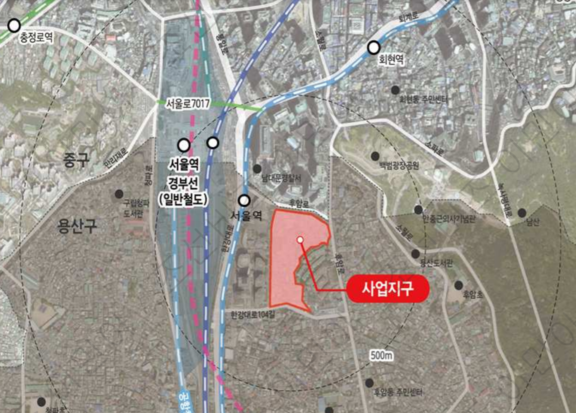Input 2021.02.05 14:00
The Minister of Land, Infrastructure and Transport Byeon Chang-heum announced the’Public Housing and Urban Regeneration Project Promotion Plan for Improving the Residential Environment in Seoul Station’s KDB Life Tower’ on the same day. Seoul Station Jikbangchon was selected as the third Jikbangchon maintenance area after Seoul Yeongdeungpo Station and Daejeon Station.

Seoul Station’s jikbangchon remains the country’s largest jikbangchon with over 1,000 residents. Residents pay a monthly rent of about 240,000 won for rooms less than 2 pyeong, similar to those in other areas. Insulation, sound insulation, heating, etc. are vulnerable, and hygiene conditions are also poor. In recent years, redevelopment has been promoted by the private sector, but it has been canceled due to lack of measures to relocate residents of the Jeokbang.
The public housing that will be supplied to the residents of Jikbang is expected to have a deposit of 1.38 million won and a monthly rent of 37,000 won with a housing area of 18 square meters (5.4 pyeong). The government’s goal is to provide a better environment than a room for an average of 244,000 won per month on the 1.65~6.6㎡ (0.5~2 pyeong) area where the local residents lived in the past.
The Ministry of Land, Infrastructure and Transport separates and sequentially rearranges complexes in order to prevent gaps in support services for residents in the side of the room during the project period, and to minimize the demand for migration. It plans to demolish existing buildings in areas where rental housing and public pre-sale housing will be built, construct public housing, and provide private housing by rearranging the remaining sites after resettlement of existing residents is completed.
Temporary residences for the local residents (about 150 people) residing in the area to be demolished are created using guest houses in the business district or modular houses in the park. Among the residents of general housing (about 100 households), the desired households are planning to use the chartered or purchased lease in the nearby area to prepare a temporary residence.

The urban regeneration new deal project will be linked to the public housing project. The public housing complex is also planning to install convenience facilities such as national and public kindergartens, libraries, and resident cafes so that both residents and local residents can use them. In order to prevent the crowding of shopping centers in the project site, a win-win cooperation shopping center in public housing complexes will be operated. The Win-Win Cooperation Mall is a commercial building that is created and owned by local governments or public institutions in the urban regeneration area and is leased to young and small business owners at a low rent of 80% of the appraised value.
